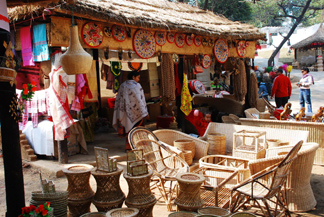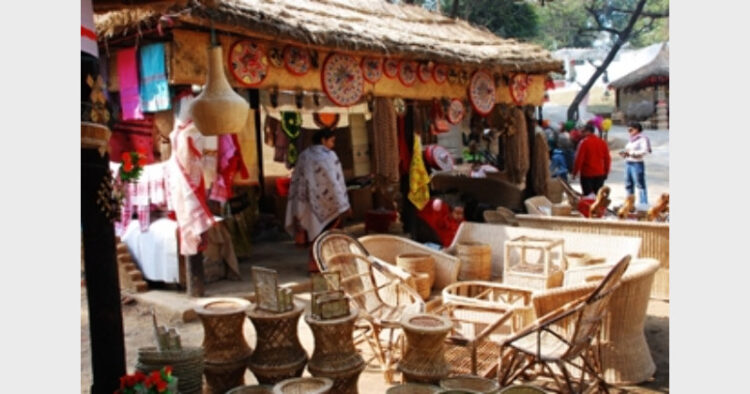Surujkund Craft Mela
Heena Nanda
 When one enters the surroundings of the Surajkund Craft Mela they can feel that they are being transported to a different world. Every corner of the place was beautifully decorated with handmade decorative things. Sellers from every corner of the country had come and were showcasing their talent to the world. But outside the premises of the Surujkund Mela are we so still so much into the traditional craft and handmade things? Haven’t the backbone of our nation is weakening? Nowadays the biggest issue in India is our markets do not recognise the true value of craft. The main problem lies in the conflict between pricing and sales of the craft goods. If you out-price goods, you sell only a limited number as the price of handmade crafts is higher than the machine-made items as it’s more of labour-intensive work and if in the end when artisans and craftsmen don’t get enough work and the price, it kills the craft.
When one enters the surroundings of the Surajkund Craft Mela they can feel that they are being transported to a different world. Every corner of the place was beautifully decorated with handmade decorative things. Sellers from every corner of the country had come and were showcasing their talent to the world. But outside the premises of the Surujkund Mela are we so still so much into the traditional craft and handmade things? Haven’t the backbone of our nation is weakening? Nowadays the biggest issue in India is our markets do not recognise the true value of craft. The main problem lies in the conflict between pricing and sales of the craft goods. If you out-price goods, you sell only a limited number as the price of handmade crafts is higher than the machine-made items as it’s more of labour-intensive work and if in the end when artisans and craftsmen don’t get enough work and the price, it kills the craft.
Surujkund Craft Mela connects people in new ways, allowing our Indian craftsmen to meet potential buyers and get good business. The mela was conceived primarily to promote the pool of skilled artisans, who used indigenous technology, but were suffering due to the cheaper machine-made imitations. This is an earnest effort to provide a platform for crafts persons and wavers to directly market their wares by eliminating the middlemen.
These craftspeople or artisans are the backbone of the non-farm rural economy, with an estimated 7 million artisans (according to official figures) engaged in craft production to earn a livelihood. The crafts persons who had participated in the mela said that it has proved to be a boon for them as the profits they earned through this 15 day long mela helps them survive their livings for the most part of the year. It is a platform through which we can introduce the rich cultural heritage of India to the world.
Sarvesh Pandey, craftsmen from Pratapgarh, Uttar Pradesh, who make and sell handmade soft toys, said that this mela is a golden opportunity for them and also is a boost to their self-motivation. In the time period of 15 days we earn a good profit of around 50 thousand rupees which is very hard for us to earn at our native places. But from this time we have to pay rent of approx 29 thousand which will also affect our profit margin.
Another handloom manufacturer Ramesh from Meerut said it is a golden opportunity for us to show people our rich heritage which also helps us to sustain against fake machine-made clothes. The richness of handmade clothes has to be re-introduced to the people. It has been our 3 rd consecutive year here. This year sales very bit low initially but we are confident that we will end up collecting good profit. This kind of mela should happen more frequently to help craftsmen like ours to sustain and grow in the market.
Another problem for the Indian artisans is that there is disconnect between official craft support schemes and the twin realities of artisans’ motivations. Policy and schemes have largely subsidised and incentivised market players in preference to artisans, often ignoring the incredible creativity that is vested in them and reaching only a fraction of the millions working in this sector. Shortage of raw materials is another emerging constraint for the Indian craftsmen and weavers which have to be removed for the survival of handicraft industry of our country.













Comments